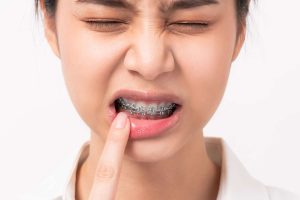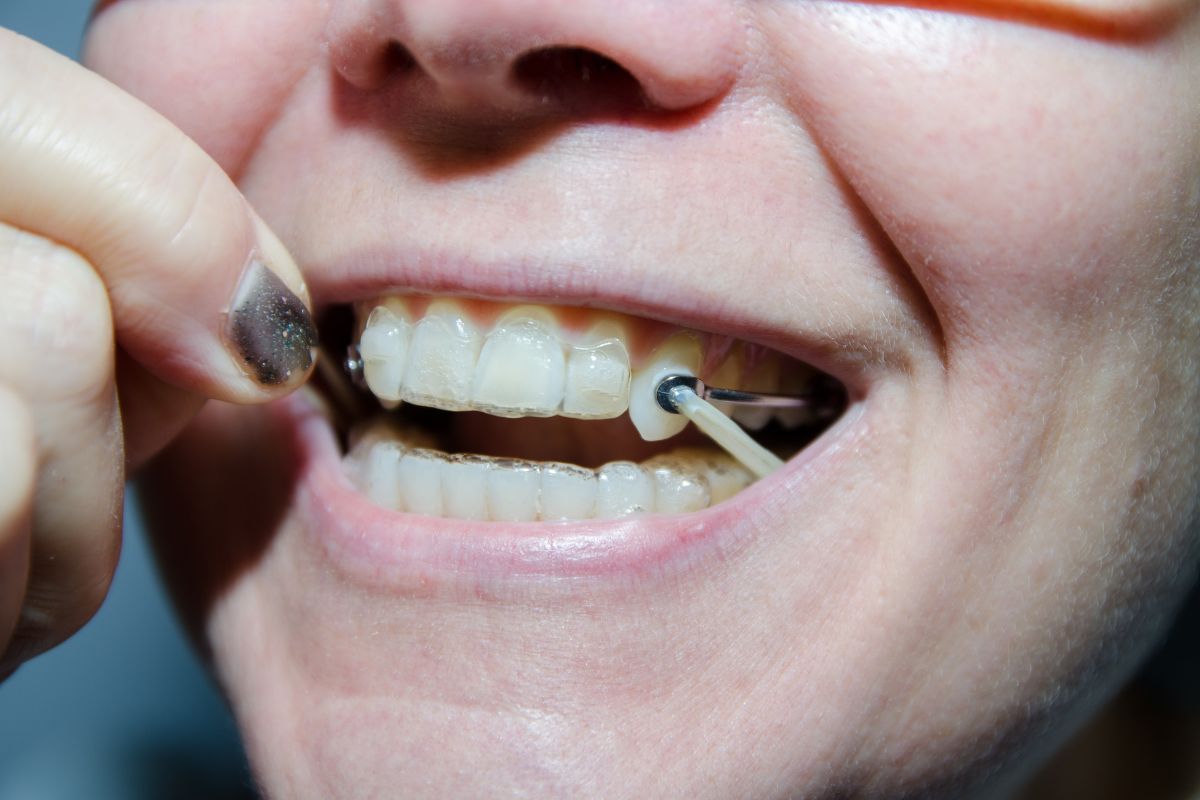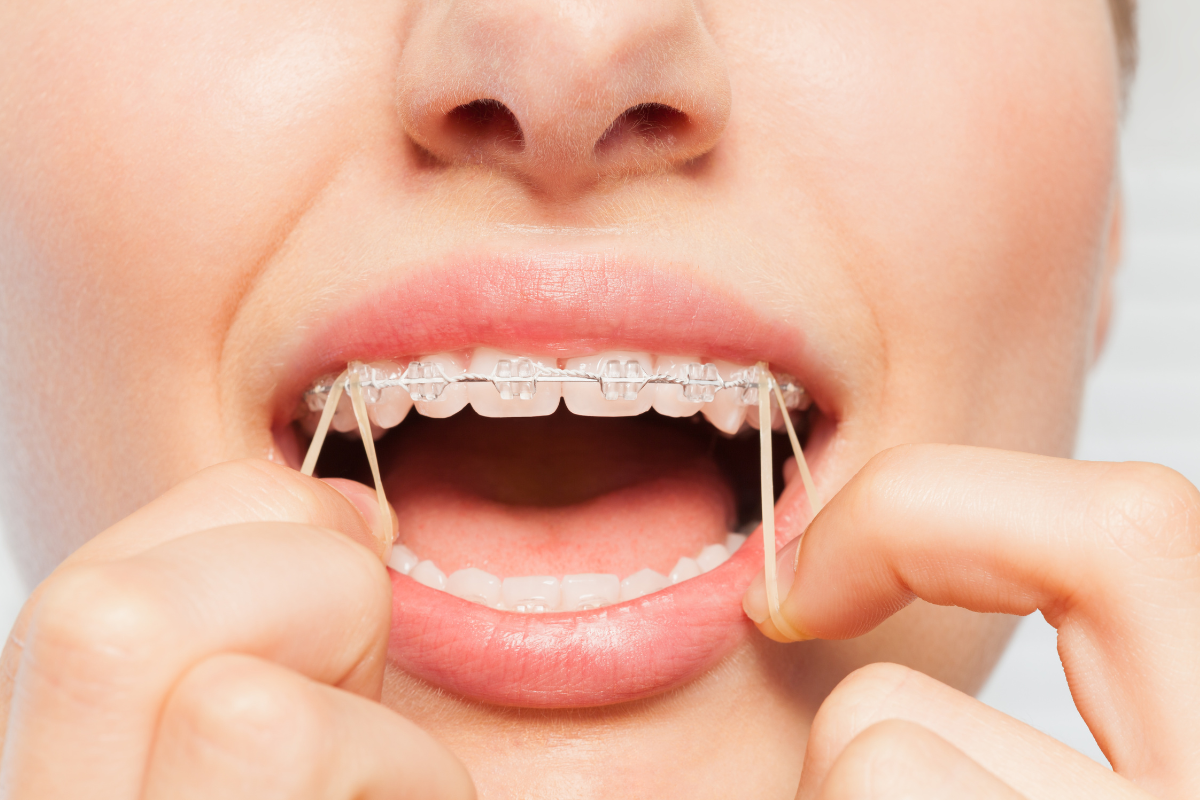

Orthodontic treatment is a specialized dental procedure that corrects misaligned teeth and jaws. It involves gradually using braces, aligners, or other orthodontic appliances to move teeth into their desired positions. While the end result is a beautiful and aligned smile, the process can sometimes be accompanied by pain and discomfort. Understanding how to manage and alleviate these sensations can make your orthodontic journey more comfortable. In this article, we will explore various strategies and tips to help you deal with the pain and discomfort that can arise during orthodontic treatment.
Common types of pain and discomfort
Like any other endeavor, things are always tough at the start! You can expect to experience various types of pain and discomfort during the initial stages of orthodontic treatment. Being aware of these common experiences can help you better cope with them.
Initial soreness and tenderness
After getting braces or aligners, it’s normal to experience soreness and tenderness in your mouth for the first few days. Your teeth and gums may feel sensitive as they adjust to the new appliances. Any orthodontic treatment-related soreness should be gone or significantly reduced after five to seven days. Activities involving the use of the jaw and the teeth, like eating and talking, should be far more comfortable because the teeth will gradually adapt to the orthodontic appliances.
Ulcers and mouth sores
Occasionally, braces or aligners can cause ulcers or mouth sores due to rubbing against the delicate tissues inside your mouth. These sores can be painful and make eating and speaking uncomfortable. Canker sores typically go away without any intervention within a week or two. As your mouth heals and becomes accustomed to your orthodontic appliance, you’re far less likely to develop more. To hasten the healing process, do your best to be patient and maintain good oral hygiene.
Jaw pain and headaches
Experiencing jaw pain and headaches? Don’t worry; it is all part of the process. While uncommon, some individuals may experience jaw pain and headaches, especially during the initial stages of orthodontic treatment. This discomfort can arise due to the pressure exerted on the jaw and surrounding muscles.
If headaches remain after orthodontic treatment and braces are removed, orthodontic treatment is most likely not the root. In such circumstances, you should seek treatment from your primary care provider.
Tooth Sensitivity
As your teeth move, they may become more sensitive to temperature changes or pressure. This sensitivity can cause temporary discomfort while consuming hot or cold foods and beverages. Rest assured, the sensitivity only remains for a few days and is not permanent.
Tips for managing pain and discomfort
Fortunately, there are several techniques and remedies that can help alleviate the pain and discomfort associated with orthodontic treatment. Here are some effective strategies:
Over-the-counter pain relievers
Non-prescription pain relievers like ibuprofen or acetaminophen can help reduce pain and inflammation. In the future, try taking the medication an hour before your visit if you know you always have discomfort following an orthodontic appointment. This way, you’ll feel less pain and suffering during and after your appointment.
Disclaimer: Always consult with your orthodontist or pharmacist before taking any medication.
Cold compresses and ice packs
Applying a cold compress or ice pack to your cheeks can numb the area and relieve soreness and swelling. If you don’t have access to cold compresses and ice packs, sipping from a cold glass of water will do the trick!
Saltwater rinses
Gargling with warm salt water can help soothe mouth sores and ulcers. Aside from that, it also helps promote better mouth health by fighting oral bacteria. Dissolve half a teaspoon of salt in a cup of warm water and rinse your mouth gently 2-3 times a day.
Orthodontic wax
Orthodontic wax is a soft and pliable substance that can be applied to the brackets and wire. It creates a barrier that minimizes irritation and prevents cuts on the inside of your mouth.
Swallowed some of the wax? Do not be alarmed! Orthodontic wax is made from non-toxic materials. Just remember to take them off after brushing your teeth and reapply them after brushing and eating meals.
Soft food diet
Opt for softer foods like soups, mashed potatoes, yogurt, and smoothies, especially during the initial days after getting braces or aligners. Avoid hard or sticky foods that can cause additional discomfort.
We urge you to take your condition as an opportunity to try different kinds of food! Who knows? One of the foods recommended during your orthodontic treatment might become your favorite! I, for one, love to eat yogurt!
Regular dental visits
Schedule regular check-ups with your orthodontist to ensure your treatment progresses smoothly. They can address any concerns and guide in managing discomfort.
Coping strategies for orthodontic treatment
Apart from specific remedies, certain coping strategies can help you navigate through your orthodontic treatment more comfortably. Consider implementing the following techniques:
Proper oral hygiene
Maintaining excellent oral hygiene is crucial during orthodontic treatment. Brushing and flossing regularly and using specialized orthodontic cleaning tools (an interdental toothbrush, for example) can help prevent additional discomfort and ensure your teeth and gums stay healthy.
Communication with your orthodontist
Openly communicate any pain or discomfort you experience with your orthodontist. They can suggest personalized solutions, adjust your treatment plan, and provide reassurance during challenging times.
Distraction techniques
Out of sight, out of mind. Engage in activities that divert your attention from the discomfort. Listen to music, watch your favorite TV show, or engage in hobbies to help take your mind off any pain or soreness.
Support from friends and family
Seek support from your loved ones. Sharing your experiences and concerns with friends or family members who have undergone orthodontic treatment can provide comfort and reassurance. You can also try to join social media groups where people share their orthodontic treatment experiences.
The importance of patience and perseverance
Dealing with pain and discomfort during orthodontic treatment requires patience and perseverance. Remember that temporary discomfort is a small price for achieving a beautiful and confident smile in the long run. Stay focused on the end goal and trust the expertise of your orthodontist.
Conclusion
Orthodontic treatment can accompany pain and discomfort, but you can manage these sensations effectively with the right strategies. Following the tips in this article can alleviate discomfort, ensure a smoother treatment experience, and ultimately achieve the smile you’ve always desired.
Get Orthodontic Treatment with Us!
Unhappy with your smile? Let’s change that! We can turn your misaligned, crooked, and crowded teeth into the smile you have always wanted.
Say goodbye to low self-esteem brought by malocclusions. Be in the care of one of the best Orthodontic Treatment Providers in Toronto, Ontario. Schedule an appointment with us!
Recent Posts
-
Inside the World of Orthodontists: Education, Precision, and Transformative Treatments
The Evolution of Orthodontics: A Brief Historical Overview Orthodontics, an integral branch…
-
How Orthodontists Plan a Treatment for a Beautiful Smile
Understanding the Patient's Unique Needs A positive self-image and confidence can result…
-
Unleash Your New Smile! Here's What You Need to Know Before Braces Removal
Are you excited to see your smile transformation? Taking your braces off…
-
Traits That a Good Orthodontist Should Have
Choosing an orthodontist is half your smile transformation journey. That’s why in…
-
How Braces Can Help Fix an Asymmetrical Jawline
An asymmetrical jawline can cause concern for many individuals, affecting their appearance…
-
Can Cavities Be Reversed?
Cavities are among the most common dental issues people of all ages…
-
What to Prepare During Your First Braces Appointment
Are you about to embark on your journey to a beautiful smile…
-
Taking Care of Baby Teeth: A Comprehensive Guide for Parents
Caring for our children's health is one of our most crucial responsibilities…
-
What are Brace Elastics?
If you or someone you know is undergoing orthodontic treatment with braces,…
-
Difference Between an Overjet and Overbite: A Comprehensive Guide
Two orthodontic terms that often confuse our patients are "overjet" and "overbite."…







 Instagram
Instagram
